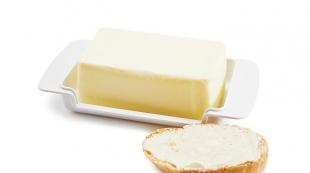How to work with an electric planer with maximum efficiency? Planing a wide board with an electric planer: basic rules Choosing an electric planer for work.
An electric planer is an essential tool for anyone who works with wood, and when building or repairing it can be an indispensable tool. At home home master, as a rule, a traditional hand planer is sufficient, but in a private courtyard or suburban area there is plenty of woodwork. Baths, outbuildings, fences, benches and other furniture - the list goes on and on.
An electric planer will save the master a lot of time and effort and will allow you to achieve good results. An electric planer brings the workpieces to the right sizes, level surfaces, remove notches, burrs and knots, cut edges, select grooves. The planer, of course, cannot afford the “fine” surface treatment to perfect smoothness; this will require additional tools. But with its main task - roughing wood in large volumes - an electric planer, subject to the rules of operation, copes perfectly.
As with choosing any power tool, when choosing an electric planer, the master should start from the main tasks in which the tool will be most often involved. An important role is played by the power of the tool, with which its performance is directly related. A planer of greater power cuts "deeper", that is, they can remove a thicker layer of wood in one pass. Manual electric planers are produced with a power in the range of 0.5 - 2.2 kW. Above one and a half kilowatts - already, in fact, a professional tool for large-scale work. If you plan to use the planer often and in large volumes, it makes sense to look at more powerful models. But, as always, the rule applies: the more powerful the tool, the more it weighs and the higher its price. With a small power planer it will be convenient to work on weight. Medium power models weigh between 2.5-4 kg.
Another indicator is the frequency of rotation of the drum, that is, the number of revolutions that it makes per unit of time. This value is very important to consider when choosing a planer, the user believes. wind1wind: The higher the number of revolutions, the better the quality of the cut. The best option, which should be guided by when choosing - 15000-16000 rpm.
wind1wind:
- The planer does not make an absolutely flat surface, but a “wave” with a very small step. To make this waviness invisible, they increase the number of revolutions of the shaft and the number of knives on the shaft. These two parameters are very important when choosing.

Width planing depends on the width of the cutting edge of the knives. The most "traveling" sizes of knives for household electric planers are 82, 102 and 110 mm. The higher the planing width, the fewer passes will be required to complete the surface.
To simply process the board to a smooth surface, a planer with knives is enough, narrower than the board. But if the width of the knife does not overlap the width of the material being processed, it is ideal flat surface it will not work - at least a minimal “step”, but it will remain.
Depth cut is, in fact, the thickness of the layer of wood removed by the planer in one pass. In household planers, it usually does not exceed 2 mm, in more powerful ones - 4 mm. Most models have depth adjustment.
Electric planers use removable blades made of hard alloys and hardened steel. Most of them, even carbide ones, can be sharpened and straightened, but narrow knives cannot be sharpened: their design does not imply sharpening. Certain planer models come with a sharpening tool. You can make it with your own hands.
Olegych:
- To edit knives, you need thicker glass and a couple of sheets of good sandpaper. We soak the paper in water, sculpt it on glass - and go! But this is exclusively for dressing, knives “earned” on nails and bricks - only on the machine.

Sole the planer in contact with the surface to be treated must be even and smooth. In modern planer models, barely noticeable grooves are made on its surface - grooves that prevent the formation of an “air cushion” between the sole and the material during operation and thus ensure a uniform cut. The grooves on the front of the sole are designed for chamfering the corners of the parts. When choosing a planer, you should pay close attention to the quality of the surface of the sole, especially when it comes to inexpensive models.
– A defect found in non-brand planers is the so-called “drunken sole”. We check this way: we set the adjustment of the removal to zero, the knife is brought to the upper position. We apply a ruler along the length of the planer, alternately from two sides, so that it lies on both platforms at once. There should be no gaps between the ruler and the sole.

When choosing an electric planer, it is important to hold the tool in your hands, to understand whether the tool handles, start and adjustment buttons are conveniently located for you, whether its weight suits you. Modern electric planers have many additional options and parameters that facilitate and improve the work process. But all of them, of course, increase the cost of the instrument. Among the most popular options are directional chip ejection with the ability to connect a bag for collecting chips or a vacuum cleaner, a “soft start” system and speed control. It all depends on the requests of the master and his financial capabilities.
A useful accessory is a universal ruler that allows you to evenly process a surface wider than the planing width of the planer in one pass, as well as planing at an angle of 90 degrees to the supporting surface. Often such rulers come with a planer, but if not, it makes sense to purchase it separately.

The basic work performed by an electric planer is easy for a beginner to master, and if you follow simple rules, then the tool will serve for a long time and efficiently. Planing should be started only after the drum of the included planer has fully gained momentum. And don't expose it right away. maximum depth planing: it is better to remove a millimeter twice than to try to remove two millimeters at a time. It is not necessary to put pressure on the tool with effort: it should only be directed, and the plane should be planed by itself, “like clockwork”. And for this, the knives must be sharp.
It is not so easy for craftsmen starting to work with an electric planer to determine when sharpening or replacing a knife is necessary. forum member Nomad advises to use visual methods. If the knives are sharp, the surface is smooth. If they are blunt, rags of wood form on it, since the knives no longer cut, but tear it. Another sign of dull knives is brown high temperature wood, especially in the area of knots.
Aleksej2000:
- Still at dull knives the planer begins to vibrate on the knots, as if bouncing finely: the knife does not cut and repels from dense material. The best thing is to put new knives in and try how they take. And then the feeling of sharp knives will be familiar. And these same sharp knives try to walk on a knot in order to see the difference.

A common problem faced by novice craftsmen is the displacement of the processed material under the planer. Although a planer is one of the safest tools, there is still a risk of injury when holding wood with your hand. The problem is solved by making a simple board retainer and a planer lateral displacement limiter - as advised by a forum user wind1wind:
- Fasten two blocks of length no less than the boards being processed along the width of the sole of the planer on the workbench. The sole of the planer should pass between them with a minimum gap, but without difficulty. A piece of rail is attached to one end, into which the board will rest. Additionally, the board between the blocks can be fixed with a wooden wedge.
For this design to work properly, the end stop of the rail and wedges should be slightly thinner than the planed board, the forum member advises. The blocks should, on the contrary, be thicker than the processed board by about 1/2-2/3 of the thickness of the planer sole. Then they will prevent the lateral displacement of the planer during operation. On the other hand, the planer will not touch the bars with protruding parts of its structure (belt guard, engine).

Members of the forum discuss the features of the choice of electric planers, the advantages and disadvantages of specific models in. you can read the recommendations and get advice about correct work electric planer. Members of the forum exchange experience in replacing, sharpening and straightening knives for planers at. On the repair of planers, milling cutters and circular saws look for information. This video tells about the basics of working with an electric planer.
Unfortunately, not everyone knows how to work with an electric planer. Behind the appearance of ease of use hides several important nuances.
First of all, you need to determine how often and for what purposes you will use the tool. Its power and design will depend on this. Planer power with electric drive ranges from 0.5 to 2.2 kW, in execution they may differ in the number of knives. Basically, models with two blades are presented on the market.
A few tips:

So, you have chosen the unit you need. It would not be superfluous to check the cutting edges of the knives for flaws - they should not have chips and bumps and the sole of the planer, which should be as smooth as possible. As a result, these factors will affect the quality of the treated surfaces.
Before starting the processing of the main product, make several training cuts on unnecessary bars. This will allow you to get used to the tool, master the planing depth switch and, in general, evaluate the capabilities of your tool. In the course of trial work, it is possible to identify the functional shortcomings of the new "assistant". They are removed by adjusting the planer.
How to properly set up the tool + (Video)
It is best, of course, to seek help from a service workshop, where professionals will quickly and efficiently help with setting up a planer. When this is not possible, you will have to cope on your own. Use the hex wrench as instructed to loosen the blades on the drum. Next, to put the knives in the exact position, use the locksmith's ruler.
Novice carpenters should remember that the smaller the depth of cut, the higher the quality of processing and the easier it is to move on the surface of the board. The more the knife protrudes beyond the soles of the planer, the more wood it removes. After adjusting the blades, you need to thoroughly tighten all fasteners. To make sure that everything is done correctly and the cutting surface does not come into contact with the body, you need to turn the drum several times by hand. All adjustment work must be carried out on the instrument turned off from the network.
Working with wood - wide board + (Video)
Before starting work with a wood surface, it is worth determining the mode that is convenient for yourself - manual or stationary. For example, consider the processing of a wide board.
Manual mode:
For better safety of the worker and his environment, it is necessary to secure the future product with high quality. In the presence of even a minimal backlash, the quality of work also deteriorates. After you need to check the freedom of movement along the board. No foreign objects should interfere with the operation of the tool. It is very important to hold the electric planer firmly and with both hands.
Before switching on the tool, the knives must not come into contact with the surface to be treated. Carefully bring the power tool from the end wooden canvas can immediately after launch and move forward. Hold the sole of the planer flat, parallel to the board. The pressure of both hands should be equivalent.
A different force is applied only at the beginning of the passage through the tree, where more emphasis falls on the front handle, on the back - at the end. During operation, it is necessary to exclude jerks, stops or accelerations.
With experience, the correct completion of passes on the back of the workpiece and the setting of the cutting depth of the knives will become more accurate. The direction of movement of the planer for processing lumber is carried out along the fibers. In the case of a prefabricated product from several bars, boards with high irregularities in the joints, the electric planer moves diagonally.
Planing straight + (Video)
In order to plan evenly, it is necessary to lead the planer only forward without turns and distortions. The thickness of the product determines the speed of movement along it. On average, it reaches from one and a half to two meters per minute. Do not apply too much force - this will cause the tool to stop and unevenness. At the end of the straight line, you need to turn off the engine, and move the mechanism to the next section. Even when the tool is turned off, do not touch the knives, as this threatens with accidental injury.
Be sure to ensure that the chips do not fall under the sole of the tool. It is better to purchase an electric planer with a dust collector. Then the process will become much cleaner.
A corner stop is required to avoid chamfering on the edge. It is attached to the side of the base of the planer, perpendicular to the axis. In order to avoid chipping on the edge, dull it a little by chamfering. The same procedure applies to varnished parts. This will help ensure a smooth transition between the pair of surfaces.

Stationary mode:
In this case, the tool is attached to a rigid stable support. A wide board is directed away from itself along the plane of the planer against the movement of the knives. Working in this mode, you need to advance the wood with the same speed and pressure at the point of contact with the knives.
At the end of the lumber processing, scraping is performed. This procedure allows you to align the seams visible after different passes with a planer, to remove roughness. In this case, a looping machine is used.
Performing work with an electric planer is not a very difficult task if you have minimal skills in working with it. But it will be somewhat more difficult to plan a wide board with an electric planer. Qualitatively, not every specialist can perform such work. This is due to the difficulty of removing a uniform layer between the processing boundaries.
Performance of work: instructions
In order to achieve high-quality processing of the board, before that, it is necessary to initially do a trial processing on lumber waste. At the same time, the planer can be used in different modes of operation: it is manual mode and stationary. The stationary mode consists in passing the workpiece through the rotating blade part of the planer.
In order to perform work using manual mode, before starting the process, it is necessary to set up the tool. not much different from setting up a conventional hand planer. To do this, you need to adjust the depth of cut of its knives. Most often, this size is 1-4 mm. When setting up, it is necessary to take into account the fact that a smaller depth of planing of the material will improve the quality of its processing.
Moreover, setting the knife to a shallow cutting depth will allow it to move more easily over the workpiece. In this case, you need to press on the tool at the edge of the passage and round off the back edge of the edge (which will help avoid injuries).

The less the rotating knife protrudes beyond the sole of the planer, the smaller the layer of wood it will remove, therefore the boundaries between different passes will be less noticeable.
In the case when deep processing of the material is necessary, then during the first pass, the planer knives are adjusted to the maximum depth of processing. And then they are reconfigured and perform a more accurate final planing.
Over time, you can learn how to properly complete the pass on the back edge of the material and select the correct planing depth. This will help speed up the process of work and do it not in 8-10 passes, but in 4-5.
In order to correctly set the knives, which depends on the difference in the upper marks between the front and rear ends of the planer, it must be done using a metal ruler.
Back to index
Proper wood processing
When using an electric planer, it is necessary to choose the direction of material processing correctly.
It is usually accepted to take it along the direction of the fibers on the wood. But in the case when workpieces are processed, which are assembled from several boards or bars, having large protrusions at the joints, then processing can be carried out in a diagonal direction. The knives of the electric planer rotate at a fairly high speed and therefore allow you to perform such a procedure. Of course, ordinary hand tool it won't work that way.
In order for the processed edge not to turn out during oblique processing, it is necessary to apply an angular stop, and not rely only on individual skill and eye. It must be attached to the side of the instrument to its base, in a strictly perpendicular position relative to its axis. Now, to plan, you need to attach the planer tightly to the plane of the board, and its base should be located exactly at an angle of 90 degrees.
The corner stop must be very firmly fixed, since during long work the screws of its fastening can loosen, which will lead to the working surface of the planer becoming tarred. If this still happened, then you need to wipe it with white spirit.
To avoid chips on the edges of the board, they need to be slightly dulled. This is done by chamfering. The same procedure must be performed on the parts, which will then be varnished. This will help create a smooth transition line between the two surfaces.
Having completed the processing of a wide board, you can resort to the procedure for cycling it. Cycling is the process of aligning seams between different passes on a board. It is performed using a special machine. Processing such as scraping must also be performed in the direction of the board fibers. Its use will remove all unnecessary roughness.
Ordinary hand planer. But working with a hand tool is quite laborious and, if necessary, cutting a large number of boards becomes ineffective.
To speed up the process, it is more advisable to use a power tool. Modern electric planers are capable of performing large amounts of work with much less physical effort.
Let's find out how to use an electric planer correctly in order to get the job done with the quality we need.
Electric planer blade adjustment
With an electric planer, you can perform both roughing of wooden planes and finishing, after which grinding may not even be needed. Therefore, it is important to be able to properly adjust the knives so that the depth of planing provides the surface cleanliness you need.
On electric planers, the planing depth is set by switching the handle. The adjustment step can be up to tenths of a millimeter. Therefore, when buying a planer, pay attention to this parameter, as one of the most important. Depending on what work is planned to be performed, you should select a power tool with a sufficient adjustment step for this.
Before you begin to process the surfaces of the boards or bars that you will use in the future, make a few test passes on the workpiece, which you will not be sorry to throw away later. It is during these trial runs that attention should be paid to possible machining defects.
Most often, such defects are a beveled surface or incisions. Both of these indicate incorrect setting of the knives in the drum of the electric planer.
To eliminate the defect, it is best to contact the craftsmen in the service workshop or a self-taught specialist who has more than once adjusted the knives of the electric planer. But if you don’t have such an opportunity, then you can try to adjust the blades of the electric planer with your own hands.
To do this, after loosening the fastening of the knives on the drum with a hex wrench in accordance with the operating instructions for the electric planer, you should very carefully set the knives in the correct position. To align the knives, attach a ruler and determine the desired position.
After adjusting the knives, all the bolts must be securely tightened and, turning the drum manually, see if the knives touch the body of the electric planer.
 Before starting the processing of a wooden surface, the workpiece must be securely fixed. How well it will be fixed affects not only the cleanliness of planing, but also directly on the safety of the work performed.
Before starting the processing of a wooden surface, the workpiece must be securely fixed. How well it will be fixed affects not only the cleanliness of planing, but also directly on the safety of the work performed.
The edged board or bar should not have even a small backlash. Otherwise, upon contact with the rotating knives of the electric planer, the workpiece can be pulled out and thrown to the side with force, which can lead to injury to both the worker and people nearby.
After the workpiece is securely fixed, you need to stand up so that starting to plan from one edge, you can freely move next to the workpiece parallel to the movement of the planer. The position of the body should not be tense, nothing should interfere with holding the power tool firmly with both hands.
Before turning on the electric planer, its knives should not come into contact with the surface to be cut. Only after starting, you should carefully bring the knives from the end of the board and start moving forward.
With each pass, try not to overwhelm the electric planer on the toe or heel. The sole of the planer must always be located strictly parallel to the surface to be treated.
The pressure on the front and rear handles of the electric planer should be the same. At the same time, at the beginning of the passage, you should press a little harder on the front handle, and at the end - on the back. This will avoid blockages. The required pressing force is determined only by practice.
During the movement of the electric planer on the surface to be treated, jerks, accelerations or stops are unacceptable. Otherwise, the surface cannot be made perfectly flat and various pits can be seen on it.
The speed of the electric planer on the surface to be treated is usually 1.5-2 meters per minute. At the same time, it is necessary to ensure that the chips removed by the planer do not fall under the sole.
Selection of quarters with an electric planer
 Often there is a need to choose a quarter in the workpiece to be chipped. Modern electric planers have this option and can make this task much easier for you. However, when sampling quarters using an electric planer, there are also some features that should be considered when performing work.
Often there is a need to choose a quarter in the workpiece to be chipped. Modern electric planers have this option and can make this task much easier for you. However, when sampling quarters using an electric planer, there are also some features that should be considered when performing work.
As you know, when sampling a quarter, the side stop of the planer moves along the edge of the board. Therefore, in order for the groove to turn out to be even, you should be sure that this edge does not have any bulges or pits.
When planing a quarter, pressing on the planer handles is slightly different from pressing when planing planes. With one hand, it is necessary to direct the planer forward, and with the other, press its side stop to the edge of the workpiece.
Safety when working with an electric planer
A power planer, when used correctly, will help you quickly complete large amounts of work, but if handled carelessly, it can also cause serious injury.
As mentioned above, the workpiece must be securely fastened before starting work. Otherwise, there is a risk of tearing it out and injuring the worker himself or other people nearby.
During any inspection of the cutting edges, adjustment of the knives, be sure to completely turn off the power to the electric planer by disconnecting the electrical cord from the mains. Any accidental start can leave you without fingers.
Start processing the surface by first turning on the planer and letting the knives gain maximum speed until they come into contact with the board.
If you are putting the electric planer aside to check the surface being worked on, lay it on its side only.
The electrical cord during operation should not have significant kinks or tangles. The electrical insulation must not be damaged, all current-carrying structural elements must be reliably insulated.
In the video below you can see tips for working with an electric planer (click on the triangle to view):
***
Now you know how to work with an electric planer in order to process wooden surfaces with the desired quality. Next time we’ll talk about how to properly sharpen knives for an electric planer if they become dull and the cleanliness of processing has decreased.
Hello readers blog "build a house". Almost all mechanical and electrical tools require proper handling and timely adjustment. How to properly set up a mechanical planer, we have already discussed with you in a previous article on. Today I propose to consider planing with an electric planer. At the end, you will find how to work with this tool.
Complete with electric planer
Electric planer knivesMakita produced the first electric planer. Today it is difficult for a master to imagine life without this incredibly useful tool.
How to adjust an electric planer
adjustment electric planer knives should be carried out according to the situation using a special adjustment mechanism, which is located on the front handle of the electric planer. Rotating this handle, we achieve the required amount of release of knives (0-2 mm), they must be located exactly, parallel to the frame. Too much outlet makes it difficult to work and puts extra stress on the planer motor.
Sharpening electric planer knives
Sharpening the knives of an electric planer is carried out similarly to a mechanical one. The main difference in sharpening between an electric planer and a mechanical planer is the number of knives. Here are two of them.
 Knife sharpening
Knife sharpening You guys know what..
In an electric planer, knives should be changed strictly in pairs, using one set. This will help avoid imbalances. And it will not only spoil the quality of the planing of the workpiece, but can also disable the power tool.
Planing with an electric planer
A separate condition for correct and safe planing with electric planers of any design is the rigid fixation of the workpiece.
Attention: the electric planer is a rather dangerous tool (risk of injury to the fingers), so always remember the safety precautions.
Only after the workpiece is clearly fixed, you can start planing it. First you should start with rough processing. For this, sherhebel is more often used. When using a sherhebel, movements should be directed not along, but across the fibers. Otherwise, you can cut too much wood.
Attention: if during planing with a sherhebel on a wooden workpiece there are twists that aggravate planing, then you should not put too much pressure on them. Otherwise, wood may break off in these places and this workpiece will not be suitable for further use.
The subtleties of working with an electric planer
At the end of the surface treatment of minor workpieces with a sherhebel, it should be cleaned first with a single, then with a double planer. If you are dealing with long workpieces, such as bars, then it is better to use a jointer or semi-joiner. Movement along the surface must be directed not against the fibers, but along. This is the only way you can get the most even and smooth wood surface.
 Planing
Planing Attention: When using a long planer, both hands must be used. Place your palms on the handle of the tool and firmly press both edges of the tool against the surface of the workpiece.
Planes - at least a board, at least a bar
While planing the ends of a beam or board, perform several movements with an electric planer from the edge of the end to the center, and also from the opposite edge. This will help to avoid the occurrence of flakes and spalls.
In the process it doesn't take much effort. The planer should move smoothly along the grain of the wood.
During breaks in planing, the planer should be installed with the blades up.
Make several movements with an electric planer on the surface to be treated. On the second and third movement on the surface, turn off the electric planer each time, come back and turn it off again.
Attention: To prevent sawdust and shavings from clogging the planer blade, use special bags to collect shavings.
The electric planer can be used for chamfering a part. Based on the width of the required chamfer, the planer is carried out along the edge of the workpiece to be processed the required number of times.
Complete with electric planer
When a separate side stop is installed on the electric planer (it is usually supplied as a set), it is possible to produce folding. The stop, fixing the tool at a certain distance, should touch the workpiece being processed.









